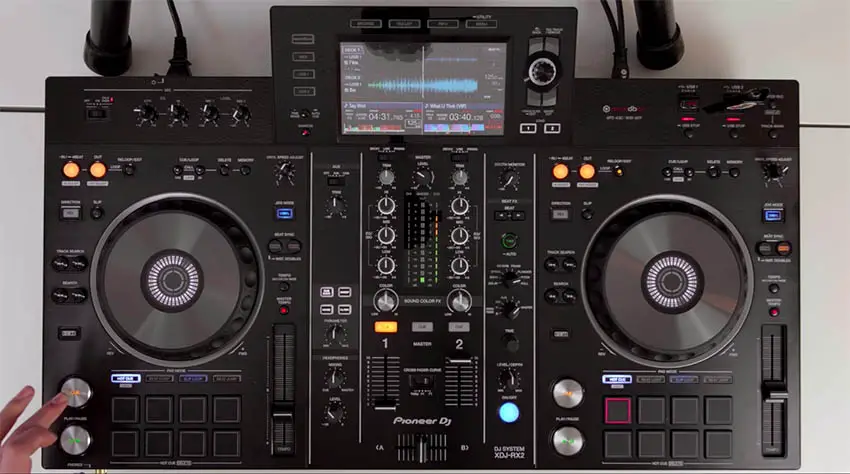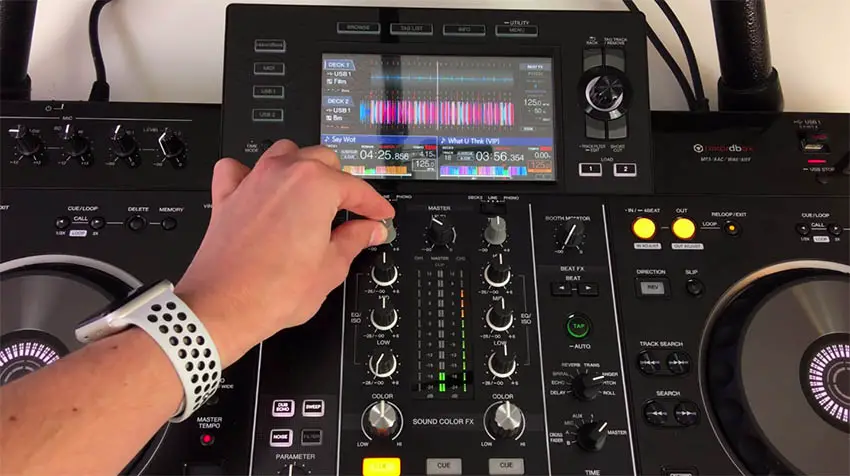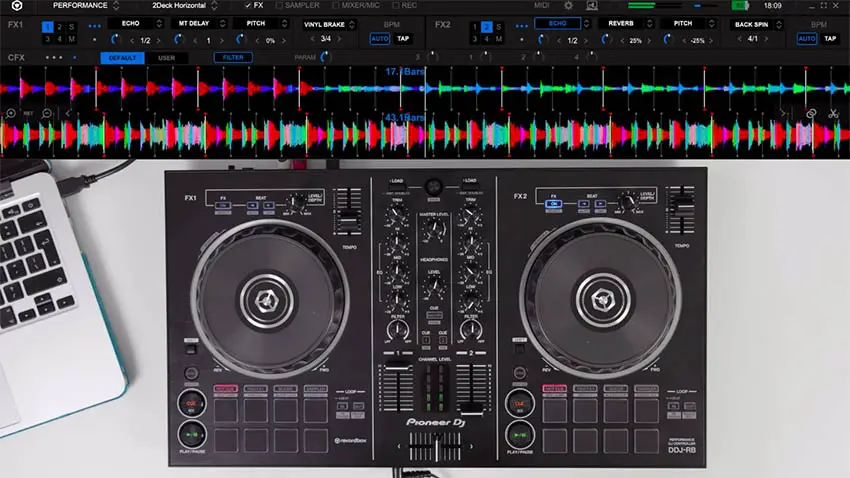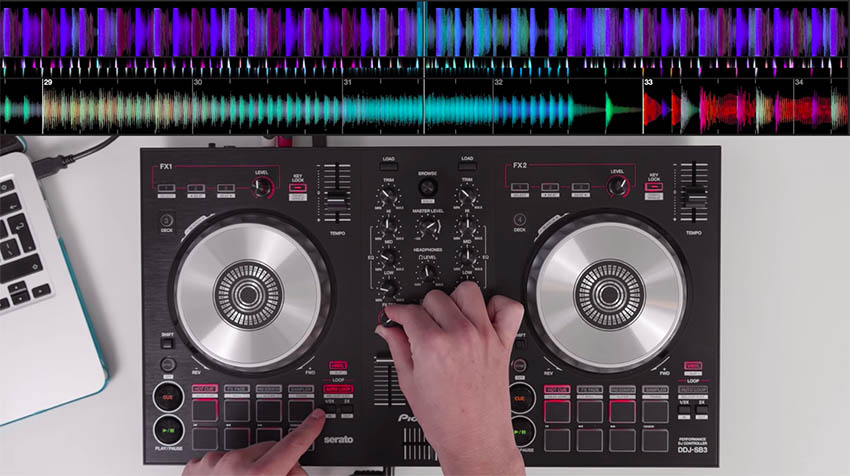Four Essential DJ Transition Techniques
The purpose of DJing? To create a seamless mix with smooth transitions, build ups of drama, drops, ambient interludes…it’s all in the art of linking one song to another in an elaborate continuous set. Transitions are fundamental components, they get you from A to B in a musical way which keeps the dancefloor rocking!
When we talk about DJ fundamentals, we often overlook the various transitions available for us to move the mix between tracks. Transitioning might seem simple, you just switch the track, right? Yes, but it’s really important to get it right in the context of the music and mix. Once you’ve dialled in the basics of transitioning, you can try advanced and creative techniques to spice up your set.
What is a Mix Transition?
A transition is a movement from one track to another. It doesn’t have to start with tune A and end with tune B, it can blend the two tracks so they play together, maybe briefly or maybe for a longer time.
Also, there’s nothing to say that a transition is between just 2 tunes, it could be between 3, 4 or even more!
When we think about transitions, we often think about the crossfader. The truth is, though, that not every DJ actually uses the crossfader. Crossfaders were imperative to vinyl mixers who wanted to beat juggle and they’re obviously essential for scratching but many DJs leave the crossfader in the central position and then transition tracks with individual track faders
Other DJs use a combination of all the faders…there’s no right or wrong answer.
Types of Transition
A mix should ideally have a few different elements to it. Consider how your mix will work from start to end.
Will it run smoothly, constantly and continually to create a seamless blend of tracks?
Or, will your mix be quite abrupt with lots of obvious changes and switch ups? Will it use a lot of ambience? Or no ambience at all?
The answers to these questions affect the types of transition you may or may not use. For smooth mixes that aim to maintain a consistent roll throughout, you’re probably going to want to keep your transitions pretty seemless or almost invisible.
For mixes that involved fast-paced complex themes, quicker cuts at less predictable times will help you achieve that choppy goal.
Of course, you can blend all sorts of transitions – it’s best to have a choice available, after all.

1) Time your transition
It’s crucial to utilize the rule of fours for song structure to guide your transitions.
In the vast majority of electronic music you’ll find standard 4 beat bars arranged into 4 bar sections, forming 8, 16, 32, 64, 128 bar phrases, etc. You may find your track has a 16 bar intro, a 64 bar main section followed by a 32 bar breakdown and then another 64 bar section before finishing, maybe with 32 bars of ambience.
Within this song structure, most transitions usually happen at the end of predictable phrases, say at 32 or 64, 128 bar intervals, etc. For example, you may have a long 32 bar ambient section and you’re aiming to bring in your new tune subtly so you can suddenly reveal it after the phrase or section finishes.
Alternatively, you might be chopping between tunes quickly at 8, 16 or 32 bar intervals. It really does depend on the tracks themselves, their style, tempo, etc.
Once your start mixing and transitioning between tracks you can often work out where things fit in naturally – experiment!
Always keep the rule of fours in mind. If you transition at odd times, things can go wrong. For example, if you drop your track after 3 bars (on the 13th beat immediately after the 12th), then your tracks may not line up properly in the long run. If you however waited until the 17th beat, which is after 4 whole bars, then your transition will line up between the two tracks.
Of course, there’s nothing to say you can’t transition at less predictable intervals. For example, you could suddenly cut between two tunes in the middle of a phrase to create an unexpected change. This can be pretty hard to pull off so experiment with your music before performance!
2) Use EQ Effectively

EQ is the staple of mix transitioning. You can’t mix between two tracks without touching the EQ at all and you should never even try! Two tracks playing un-EQ’d at high volumes simultaneously will sound really poor and can cause damage to speaker systems. If you do this, prepare for an earful from the sound engineer or speaker owner!
The idea of transitioning with EQ is to prevent frequency clashes. The bass is the most important area to EQ properly during a transition given that too much bass will overload the sound system. High frequencies can also sound very clashy becoming piercing and painful. Mid frequencies clashing together can make your mix really muddy and unclear.
It’s important to mention that sometimes you will want to mix frequencies together between two or more tracks, you just have to be careful. Want some jingles or hand claps from track 1 and hi hats from track 2? Experiment and find a balance where the two sound balanced.
Balance is the whole point of EQ – it’s called equalization for a reason!
A Basic EQ Transition
Step 1) Prepare by turning the bass frequencies down on the track you’re about to mix in, and probably a bit of mids and highs too.
Step 2) Choose your moment and lift up the fader, you might want to gradually fade the track in over a few bars or fade it in suddenly, probably 4 bars before you make the full transition.
Step 3) Once you’re approaching the transition, reduce the frequencies on the first track and compensate by elevating the frequencies on the second track. For example, you may cut the entire bass of your first track and turn the bass to 0dB (in the middle) on the second track so the new bassline replaces the old. You can do this for other frequencies too. You may leave the highs in from track 1 and keep them low on track 2 to introduce a few bars later. Remember, you can be gradual and subtle or go for a quick mix where the two tracks suddenly swap parts.
3) Using FX

Some genres call for quick mixes and transitions with fast cutting basslines but others call for subtler, longer transitions which evolve over longer phrases. FX can really help here.
Sometimes, it might sound pretty obvious that you’re just slowly elevating the fader on your new track until the two tracks are obviously playing together.
For a more creative transition, use FX to mask your 2nd track as you bring it in. Once you approach the point of transition, cut the bass on your first track for a little 4 beat break before then removing your FX and switching to your 2nd track.
4) Use Filters

Filtering basically simplifies the process of using all 3 EQs during a transition with the sacrifice of some control. If you turn a filter towards the high end, it’ll filter out everything below that point. If you turn it towards the low end, it’ll filter everything above that point.
To use filters when transitioning, you can move the filter towards the high end on your first track, move the filter towards the low end on your second track and then gradually bring up the fader.
This will keep the highs from track 1 whilst introducing the bass from track 2. Once you’ve got the fader up on your second track, move the filter towards the central position.
Filters can often soften the sound which prevents some clashing, they’re a quick route to EQ-ing your transition without always using EQ.
Transitions by Genre
House
House is pretty eclectic ranging from old school acid house to deep rolling progressive house, hard house or more commercial house. House is often quite melodic so you should make sure that your tracks mix in key with each other.
When transitioning in house, you can either take the long route where you introduce a track over a long 32 or 64 bar section, gradually swapping the EQs between the two tracks, or you can cut between quickly.
Drum and Bass
Drum and bass is always fast and heavy on percussion and rolling basslines. There’s also tons of kicks! Drum and bass transitions are often about more sudden switches, you can use a build up from your first track and then suddenly crossfade to your second track for a ‘double drop’.
Drum and bass can also be mixed to create long rolling sections of relentless drums. You may choose to keep some of the percussion in from each track to create a frenetic blend. Just be careful of the kicks – too much bass from each track will cause a muddy mess!
EDM
EDM is another genre that is often heavily melodic – always be aware of your track’s key to make sure they mix melodically. Transitions in EDM can either be subtle, evolving over 16, 32 or 64 bar sections, or they can be sudden so the audience knows you’ve definitely changed the track.
Dubstep
Dubstep is about drops, drops and more drops! There’s also often lots of heavy mid synths and some loud lead melodies. Sudden drop transitions work well in dubstep. You can stop a track suddenly and drop another in to create a really obvious transition.
Dubstep isn’t always loud and brash though, some more ambient tracks can be effectively blended for long periods.
Techno
Techno includes a lot of electronic subgenres. If we’re talking about Berlin style techno then long atmospheric transitions can keep your mix going relentlessly – you don’t want your audience to stop dancing! Tech trance or other more trancey techno tracks call for melodic long phrase mixes.
Techno songs can be pretty minimal – there isn’t always a lot of noise in the mix, maybe just some kicks and subtle percussion, for example. You can be confident about combing your two tracks in a longer transition if they complement each other. Use FX to spice things up, especially if your tracks are really minimal.
Hardcore / Hard Techno
Hardcore is about relentlessness and auditory aggression. Similar to drum and bass, hardcore transitions can be really in-your-face. It can be cool to juxtapose one track to another very different track to create a very obvious transition.
Hardcore is LOUD! Be careful about combing too many elements, for example too much mids from both tracks will create a muddy mess.
Summary
Transitions range from the subtle to the downright outrageous. Always practice and experiment and don’t be afraid to try new things! Be careful to transition properly for your tracks and genre – this is just advice and ideas – always apply it to your gear and your music before a performance. If you find these transition techniques useful, make sure you also check out our advanced dj mixing techniques that we recently covered here.
[source: Crossfader]
You may also like:
